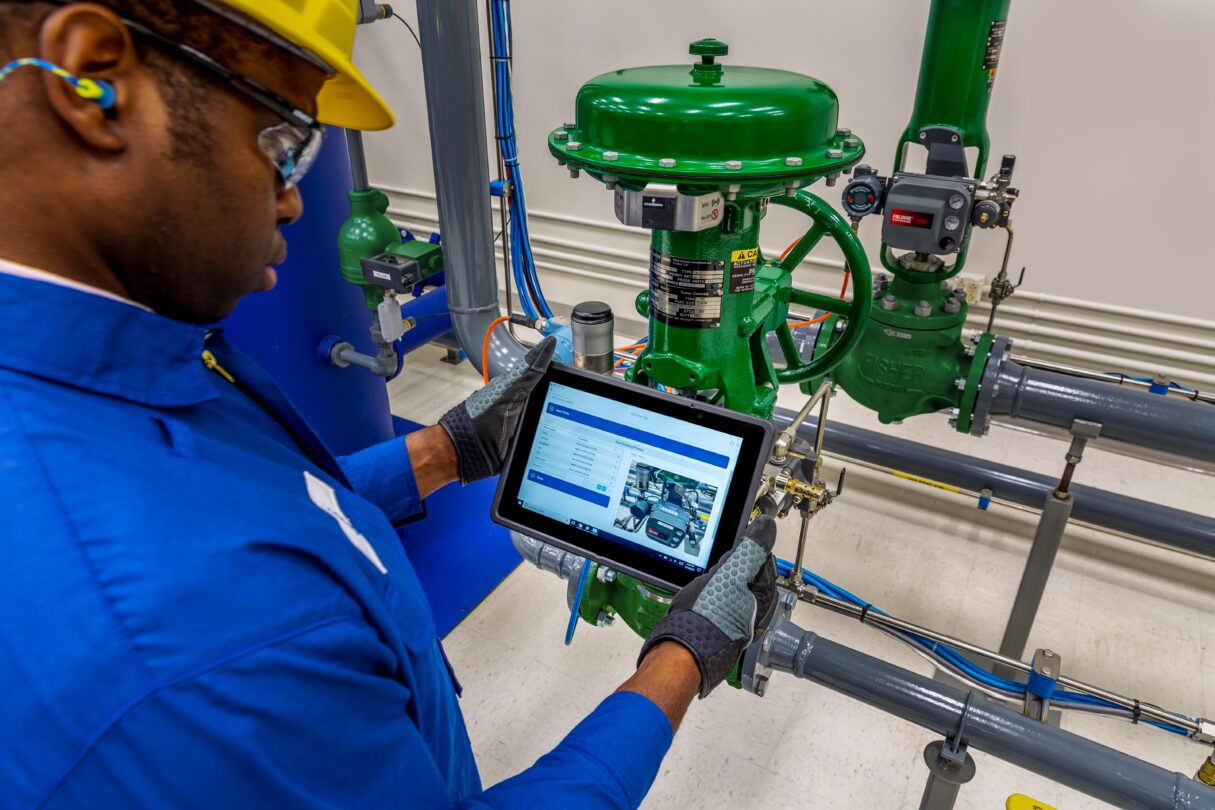Control Valves would control ideally the process without any interface to the outside. Although, that’s not practical with today’s technology. Control valves are by design an interface between the process and the outside.
This interface can cause some level of fugitive emissions, which are unintentional leaks from the process. Now whether the leak is below 3 ppm, which is essentially negligible, or over 500 ppm, which would violate Environmental Protection Agency (EPA) standards, is what is important to understand from your valves. Not only could these fugitive emissions affect the environment if the process has volatile organic compounds (VOCs), but also the process will not be as efficient as it potentially could be.
Valves Are Only as Good as Their Last Repair
Having the right technology, like the Fisher™ ENVIRO-SEAL™ packing systems, is only one piece to control fugitive emissions. Even with the best technology, maintenance is necessary to ensure fugitive emissions are minimal. Control valves need preventive maintenance to operate correctly, which will reduce fugitive emissions and increase process efficiency. An example of preventive maintenance is as simple as a visual inspection or tightening packing bolts that could loosen over time to the correct torque. An OEM certified service provider, like an Accredited Service Provider, will have the exact OEM procedure to ensure the valve is back to operating at its original state.
How to Track Fugitive Emissions
There are a few ways to check for fugitive emissions from your valves. EPA Method 21 is the recommended way to check fugitive emissions for processes with VOCs. In Section 6.0 of EPA Method 21, it outlines that a specialized VOC monitoring instrument is required.
For processes without VOCs, a specialized monitoring device is not required. For example, for air connections, maintenance technicians have been checking emissions with something called a “snoop test”, which is simply putting soap and water on the valve’s stem and watching for bubbles to form. Although, diagnostics have advanced this manual practice of checking for emissions. Diagnostics offer data to show exactly when the valve begins to operate not as intended. An example of this is when the valve needs additional energy to travel to its final set point for the process.

Conducting a Fugitive Emission Assessment through a walkdown.
If you’re not sure where to start, an Accredited Service Provider can provide a Fugitive Emissions Assessment, in which they will walkdown the critical valves to suggest the right technology upgrades and to provide the right maintenance plan based on your preferences and your valves. Sometimes certain valves can be more particular than others. If the valve must be repaired more often than others, there could be a problem with how the valve was installed or if it is the right valve for its job. During an annual Fugitive Emissions Assessment, an Accredited Service Provider would complete a full assessment to reduce fugitive emissions of your critical valves.
Why Should I Care About Fugitive Emissions?
Fugitive emissions, with VOCs or not, will affect the process and make it less efficient. Having an inefficient process leads to quality issues, additional energy usage, and increased process variability. When VOCs are involved, the environment will be negatively affected, and the plant is at risk for EPA fines.
Click here to see how to contact an Accredited Service Provider today to start a Fugitive Emissions Assessment.


